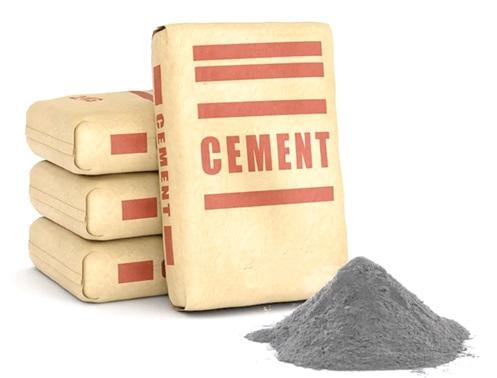This week, specifically on June 4, 2025, Citi FM’s Eyewitness News broadcast the most important news of the year.
It was to the effect that “government is ramping up efforts to promote the commercial production of eco-friendly Pozzolana cement as part of a strategic move to reduce Ghana’s reliance on imported building materials”
Speaking at the opening of the Biannual Ministry of Science and Technology Forum in Accra, the Minister for Environment, Science, Technology, and Innovation, Ibrahim Murtala Mohammed, called for strong political will and coordinated efforts to scale up the use of Pozzolana cement in Ghana’s construction industry.
His observation was apt: “Many institutions have great ideas, but lack the resources to bring them to life.
It is crucial that we come together –government, industry and academia – to build the necessary linkages and support systems.”
In an article in the Daily Graphic on May 11, 2022, yours truly did an analysis headlined, “Pozzolana: Thirsty in the abundance of water” in which I wondered why housing and other building projects were so expensively priced.
In the article, I declared that I knew the answer. Below, I reproduce the article. Please, read on:
“(The answer) lies in official lack of confidence in African/Ghanaian solutions. That mindset has, since the overthrow of Kwame Nkrumah, manifested itself in Ghanaian officials, business executives and public servants looking down on and actually rejecting local technologies and expertise.
The Tema township, the first purpose-planned enclave in West Africa, was designed and built by Ghanaian engineers and building technologists in the 1960s (note: early 1960s!); the Achimota Overpass in Accra, constructed in the 1970s (repeat: 1970s!) was the work of Ghanaian engineers.

Today, 60 years down the line, when knowledge abounds and the know-how of our scientists has increased, Ghanaian engineers and building technologists are sidelined in favour of Brazilians and Chinese, (“white men”), with presumably “superior intelligence”.
A guest on a TV programme blamed our excessive dependence on imported inputs, citing the case of the poorly patronised Ghana-made Pozzolana cement in the construction industry.
In a country where government is the biggest client in the construction sector, all it takes is a change of official mindset. It should be possible for government to decree that a certain minimum percentage of local materials should be used on all projects.
Pozzolana
Never heard of Pozzolana cement? It was invented by the Building and Road Research Institute (BRRI) of the CSIR.
The “Clay Pozzolana” replaces up to 40 per cent of imported Ordinary Portland Cement for both concrete and general cement works.
For your money, a bag of pozzolana cement costs less than its Portland cement counterpart. Thus, on the market today (2022), while a bag of Portland cement is going for GH₵60.00, you get Pozzolana cement, same quantity, for GH₵50.
The cost saving was demonstrated when BRRI undertook the construction of 650 housing units at Ashongman, Accra, using Pozzolana. By the time it handed over the houses, there had been a saving of 30 per cent.
Talk of quality and durability. The user will discover that decades after completion, there will be absolutely no cracks in a house built with Pozzolana. It is also more resistant to rain penetration and chemical attacks.
You want to know the millions of dollars Ghana spends importing cement? The country consumes eight million tonnes of cement a year. One tonne costs US$80.00. I leave readers to do the math.
Scientists
Ghanaian scientists do not blow their horn, but talking about durability, it is on record that when the fence walls of the Aboadze Thermal Plant in the Western Region were collapsing as a result of acids and salts eating away the sandcrete block wall and metal fence, it was BRRI that went to the rescue, using salt-resistant burnt bricks and Pozzolana cement.
Yet, in spite of these facts and figures, how many Ghanaian real estate developers, government institutions and individual builders will opt for Pozzolana?
It takes official policy.
To be fair, there used to be a government policy in favour of 60 per cent of local materials for public buildings, but it has remained mere paper tiger. The reason is not far to fetch: the very government officials who have to promote Ghanaian solutions or ensure compliance with the law are themselves slaves to imported “quality”.
Mindset
It’s a mindset. The story is told of an attempt by the Building and Road Research Institute to introduce low-cost housing built with local materials – such as burnt bricks, clay roofing tiles, bamboo and compressed earth blocks – for workers in one of Ghana’s regional capitals.
A top government official moved heaven and earth to have the project stopped, describing the houses as Atakpami houses, implying they were below standard for educated city dwellers.
It is this mindset that moved Bob Marley to sing: “in the abundance of water, the fool is thirsty”.
This article is a thumbs-up to Citi FM for its news-judgement and the Ministry for its boldness.
But let’s beware of nine-day wonders.
The writer is Executive Director, Centre for Communication and Culture.
E-mail: [email protected]
